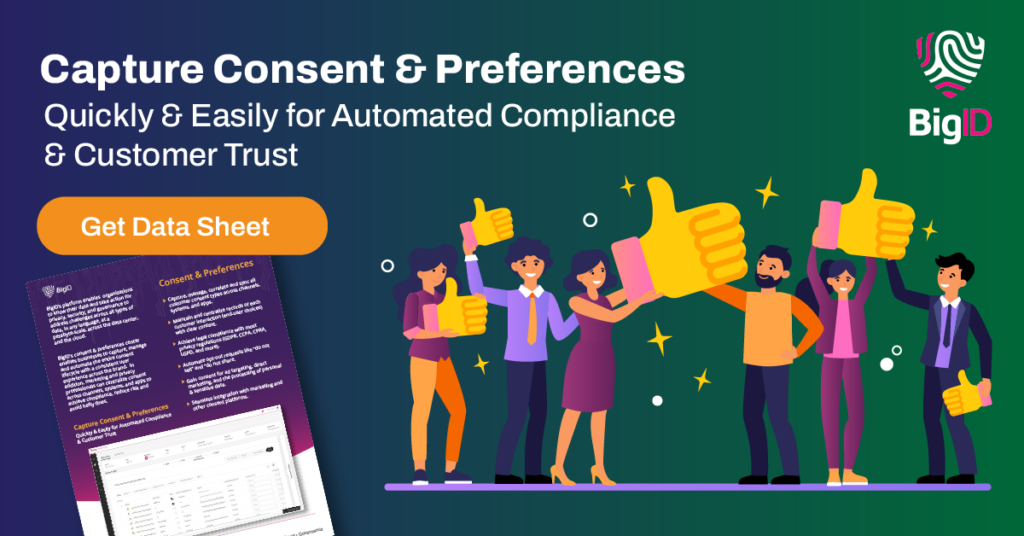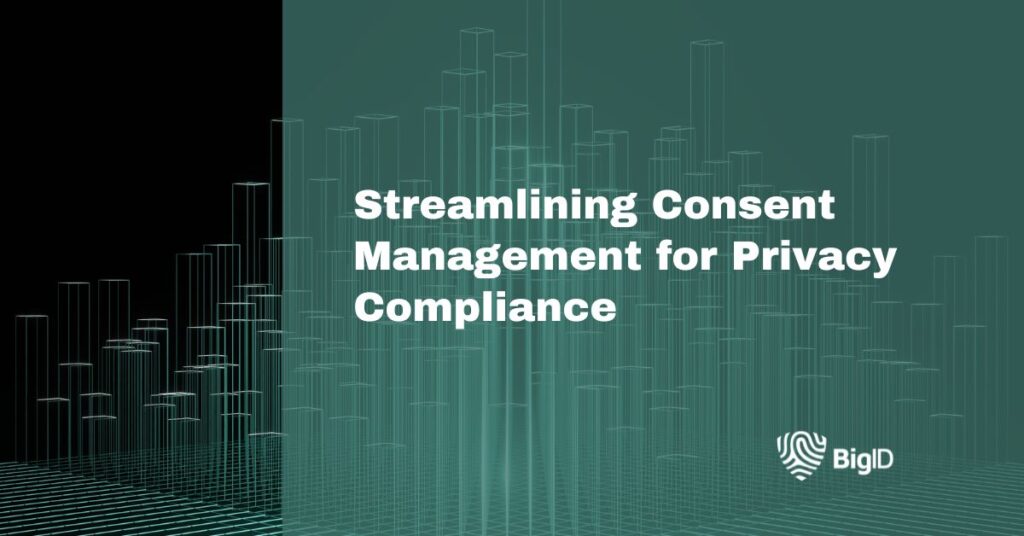What is consent management?
Consent management refers to the process of obtaining, tracking, and managing consent from individuals for the use of their personal data by an organization. It involves ensuring that individuals have given informed and explicit consent for their data to be processed, and that they have the ability to withdraw their consent at any time.
Why is consent management important?
Consent management has become increasingly important in business due to the widespread adoption of data protection regulations such as the General Data Protection Regulation (GDPR) in the European Union and the California Consumer Privacy Act (CCPA) in the United States. These regulations require organizations to obtain explicit and informed consent from individuals before collecting, using, or sharing their personal data.
Consent management is also important for building trust with customers and demonstrating a commitment to data privacy and security. By implementing a transparent and user-friendly consent management process, organizations can show that they value their customers’ privacy and are taking steps to protect their data. This can help to build brand loyalty and reputation, as well as minimize the risk of legal and financial penalties for non-compliance with data protection regulations.

Consent management components
The components of consent management typically include:
- Consent collection: This involves obtaining explicit and informed consent from individuals for the use of their personal data. This can be done through various methods, such as consent forms, checkboxes, or cookie banners.
- Consent storage: Once consent has been obtained, it must be securely stored and tracked to ensure that the organization is in compliance with data protection regulations. This may involve storing consent data in a centralized database or using a consent management platform.
- Consent management platform: A consent management platform is a software tool that can help organizations automate and streamline the consent management process. This may include features such as consent forms, consent tracking, and reporting.
- Consent revocation: Individuals must be given the ability to revoke their consent at any time. This may involve providing a simple and accessible way for individuals to withdraw their consent, such as an unsubscribe link or a user dashboard.
- Consent audit trail: Organizations must be able to demonstrate that they have obtained explicit and informed consent from individuals for the use of their personal data. This may involve maintaining an audit trail that tracks the date, time, and nature of the consent obtained, as well as any changes or revocations of consent.
Comply with privacy regulations
The following privacy regulations, listed in chronological order of their passage, govern consent management:
- EU Data Protection Directive (1995): This was the first comprehensive privacy regulation in Europe, which laid the foundation for the General Data Protection Regulation (GDPR) that followed.
- Canadian Personal Information Protection and Electronic Documents Act (PIPEDA) (2000): This regulates the collection, use, and disclosure of personal information by private sector organizations in Canada.
- US Health Insurance Portability and Accountability Act (HIPAA) (1996): This regulates the collection, use, and disclosure of personal health information in the US.
- EU General Data Protection Regulation (GDPR) (2016): This is a comprehensive data protection regulation that applies to all organizations that collect, process, and store personal data of EU citizens, regardless of where the organization is located.
- California Consumer Privacy Act (CCPA) (2018): This is a comprehensive privacy regulation that applies to organizations that collect, process, or sell the personal information of California residents.
- Brazilian General Data Protection Law (LGPD) (2018): This is a comprehensive data protection regulation that applies to all organizations that collect, process, and store personal data in Brazil.
- India Personal Data Protection Bill (2019): This is a comprehensive privacy regulation that is currently being debated in the Indian parliament, which would regulate the collection, processing, and storage of personal data in India.
These privacy regulations all include provisions related to consent management, such as requiring organizations to obtain explicit and informed consent for the collection and use of personal data, and providing individuals with the right to withdraw their consent at any time.
Navigating through the types of consent
In the digital age, there are several types of consent that organizations may need to obtain in order to collect, process, or use personal data. Here are some of the most common types of consent:
- Explicit Consent: This is the most stringent form of consent, where the individual must give a clear and specific affirmative action to indicate their consent. Examples include signing a physical or digital consent form, ticking a box on a website, or providing a verbal statement of consent.
- Implied Consent: This is a form of consent that is inferred based on the circumstances, such as when an individual continues to use a website or service after being provided with a clear privacy notice. Implied consent is generally considered to be less robust than explicit consent and may be subject to more scrutiny.
- Opt-In Consent: This is a form of consent where the individual actively chooses to opt in to the collection, processing, or use of their personal data. This may be indicated through a checkbox or similar mechanism.
- Opt-Out Consent: This is a form of consent where the individual is assumed to have given consent unless they actively opt out. This may be indicated through a pre-ticked checkbox or similar mechanism.
- Informed Consent: This is a form of consent where the individual has been provided with clear and concise information about the collection, processing, and use of their personal data, and has a clear understanding of the implications of giving or withholding consent.
- Implicit Consent: This is a form of consent that is assumed based on the relationship between the individual and the organization. For example, a customer may implicitly consent to the collection of their personal data by a business when making a purchase.
In order to ensure compliance with privacy regulations, organizations must carefully consider which type of consent is appropriate for each data processing activity and ensure that they obtain consent in a manner that is clear, specific, and informed.
The future of privacy consent management
Privacy experts believe that the future of privacy consent management is heading toward greater transparency, control, and automation. Additionally, there is a growing trend towards a more integrated and worldwide approach to privacy regulation.
- Firstly, there is a growing demand for greater transparency around how personal data is being used, and for individuals to have more control over their data. This means that organizations will need to provide clear and concise information about the purposes for which data is being collected and processed, and ensure that individuals can easily access and manage their data.
- Secondly, there is a trend towards automation of the consent management process. This involves the use of technology such as artificial intelligence (AI) and machine learning (ML) to automate the collection, storage, and processing of consent data. This can help to reduce the risk of human error and improve the efficiency and accuracy of the consent management process.
- Finally, privacy experts believe that there will be greater convergence between different privacy regulations around the world. This means that organizations will need to adopt a global approach to privacy consent management, ensuring that they comply with the requirements of multiple data protection regulations simultaneously.
Consent management statistics
- According to a survey conducted by Cisco, 57% of consumers are more likely to do business with a company that is transparent about how it collects and uses their personal data. The same survey also found that 84% of consumers are concerned about the privacy and security of their personal data.
- In 2020, Google announced that it would be making changes to its privacy policy to provide greater transparency and control over how personal data is collected and used. These changes included the introduction of a new privacy center, clearer language in its privacy policy, and simplified data management tools for users.
- In 2021, the French data protection authority fined Google 100 million euros for violating the EU’s GDPR by placing advertising cookies on users’ devices without obtaining valid consent. This case highlights the importance of obtaining explicit and informed consent for the use of personal data, as required by data protection regulations.
Selecting the right consent management platform
Chief privacy officers and other privacy professionals should look for the following features in a consent management tool or platform:
- Flexibility: The tool should be flexible enough to accommodate the unique requirements of the organization, such as different types of data and varying consent requirements.
- Automation: The tool should be capable of automating the collection, storage, and processing of consent data to reduce the risk of human error and improve efficiency.
- Transparency: The tool should provide clear and concise information about how personal data is being collected and processed, and enable individuals to easily access and manage their consent settings.
- Security: The tool should incorporate robust security measures to protect personal data against unauthorized access, use, or disclosure.
- Compliance: The tool should comply with relevant privacy regulations, such as GDPR, CCPA, and LGPD, and provide audit trails and reporting features to demonstrate compliance.
- Integration: The tool should integrate with other systems and platforms used by the organization, such as customer relationship management (CRM) or marketing automation tools, to ensure consistency and accuracy of consent data across all systems.
- Scalability: The tool should be able to handle large volumes of consent data and scale up or down as the organization’s needs evolve over time.
By selecting a consent management tool or platform that meets these criteria, chief privacy officers and other privacy professionals can ensure that their organization is effectively managing consent and complying with relevant privacy regulations.
Streamline Consent Governance with BigID
BigID is the industry leading platform for data privacy, security, and governance. Utilizing advanced machine learning algorithms and next-gen AI, BigID gives you a centralized view of all your consent data. Create comprehensive consent assessments to manage, correlate, and protect data subjects rights for compliance—all within one platform.
Get a simple view of all your personal information stored to determine consent type, purpose, and related privacy policy. BigID’s consent governance app allows you to streamline your workflows and report on consent and preferences across web, mobile, and 3rd-party systems for faster business previews.
Get more value and understanding out of your data and maintain compliance BigID’s consent governance app—schedule a 1:1 demo today.


